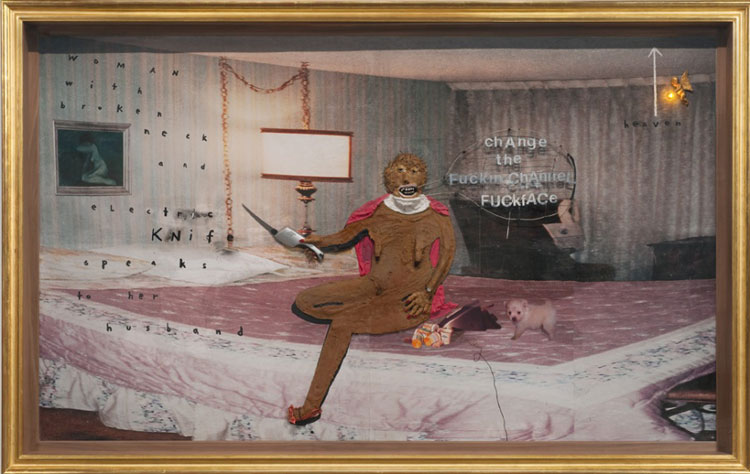Disillusioned with the politics of network television and the intricate financing of big studio films, filmmaker David Lynch has once again returned focus to his core business: being an artist.
Inspired as a teen by realist painter Robert Henri, Lynch took Henri’s legacy tome, The Art Spirit, to heart and enrolled as a painter at Pennsylvania Academy of the Fine Arts in Philadelphia. It was there that Lynch dedicated himself to painting and living what he defines as “the art life.”
“The art life means a freedom to have time for the good things to happen,” Lynch explains in his autobiographical 2006 book, Catching the Big Fish. “There’s not always a lot of time for other things.”
However, in 1967, Lynch took interest in an annual collegiate experimental art contest and discovered film as a way “to make paintings move.” He entered and won with a project inspired by a painting of his of a garden at night called Six Men Getting Sick. It consisted of stop motion animation projected on a sculptured screen. Considered to be his first foray into film, the piece will be restaged for the first time since as part of the Academy’s Lynch retrospective, David Lynch: The Unified Field, opening September 13, 2014 and running until January 11, 2015. With this award-winning installation, Lynch’s love for film was born, and Eraserhead, his breakout film inspired by the surrounding industrial smokestacks of Philadelphia, was soon to follow.
Lynch credits his twice-daily practice of Transcendental Meditation as the unending source of all his ideas. He currently makes music, designs and builds furniture and yes, still paints. Sometimes these concepts are multimedia compositions incorporating collage, layers of acrylic paint and miniatures, other times they are simple ink drawings shown like comic book panels. Recent watercolor work in a loose black, white and red style, suggests a haunted subconscious scratching, a beautiful ransom note left behind as evidence of a nightmare or an evil thought.
Recently in Paris, Lynch collaborated on a limited edition print with French street artist and TED award recipient, JR. Part photograph, part automatic drawing, the piece was produced in Paris’ oldest print shop, its lithography presses previously used by Picasso, Matisse, Miró, Chagall and Giacometti. Their finished artwork was promoted entirely through Instagram and an email-only company called 99prints. Thanks to dedicated Lynch fans and JR’s 382,000 followers, the “I Fix My Head II” prints sold out in less than 60 minutes, to a tune of $3000 a piece.
Still, it’s Lynch’s photographs that seem to capture his true calling and demonstrate his unique eye for composition and light. In 2009, Lynch took on “Dark Night of the Soul,” a project with musicians Dangermouse and the late Mark Linkous. Fifty of Lynch’s photographs were shown at Los Angeles’ Michael Kohn Gallery, accompanied by the specially produced music. As the viewer stood in front of an image, a specific song played on a hidden speaker above. The work was later released as a limited edition book and CD. In early 2014, a series of Lynch’s abandoned factory photos were shown at the Photographer’s Gallery in London.
Also the subject of a newly released book, The Factory Photographs, the black-and-white images were captured in England, New York, Germany and Poland. As an audience we are confronted with the texture of these looming relics, grand portraits of a bygone era, depicted without human interaction and almost all in the dead of winter. The ghostly shapes of these abandoned monoliths and the steely landscapes they create are what drew Lynch to the subject matter.
“Every medium is its own thing and is infinitely deep,” Lynch told Dazed magazine in a recent interview. “And there’s a connection, obviously, between cinema and still photography. For me, still photography was born out of cinema, but a still is just one frame that pulls you deeper and deeper in. It’s about the beauty of one image.”
All images courtesy the artist and Kayne Griffin Corcoran Los Angeles




